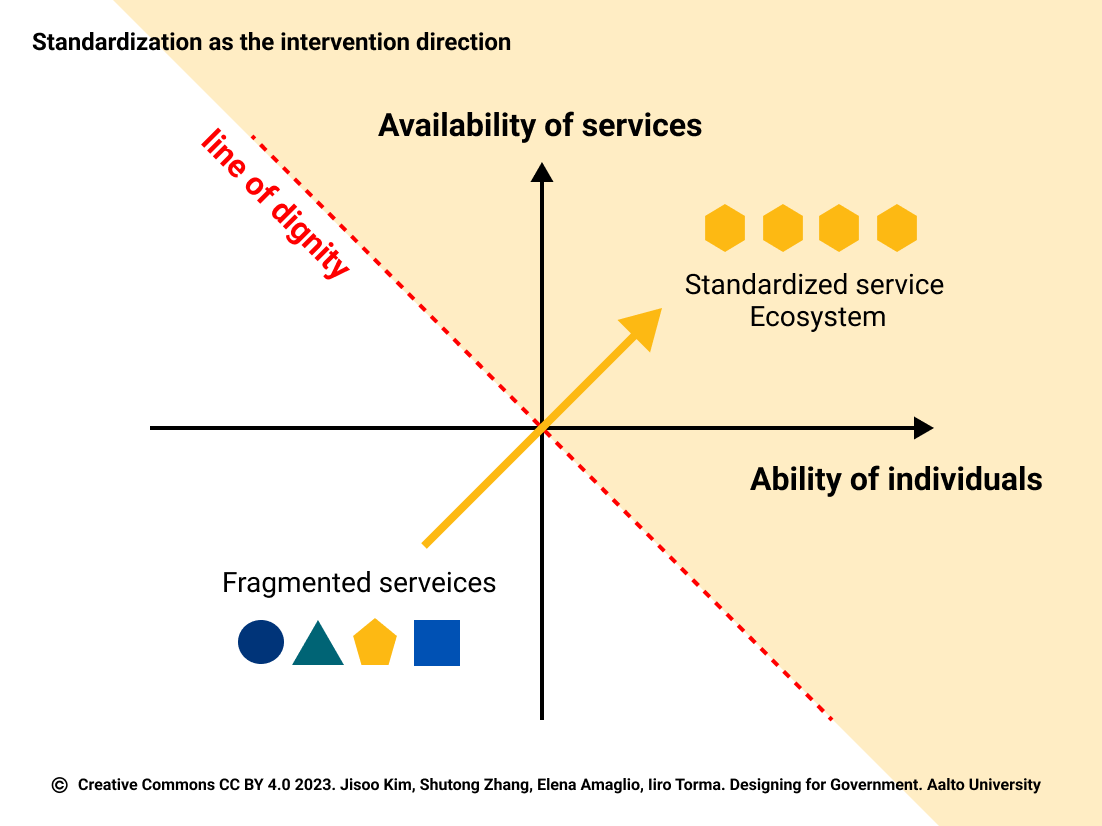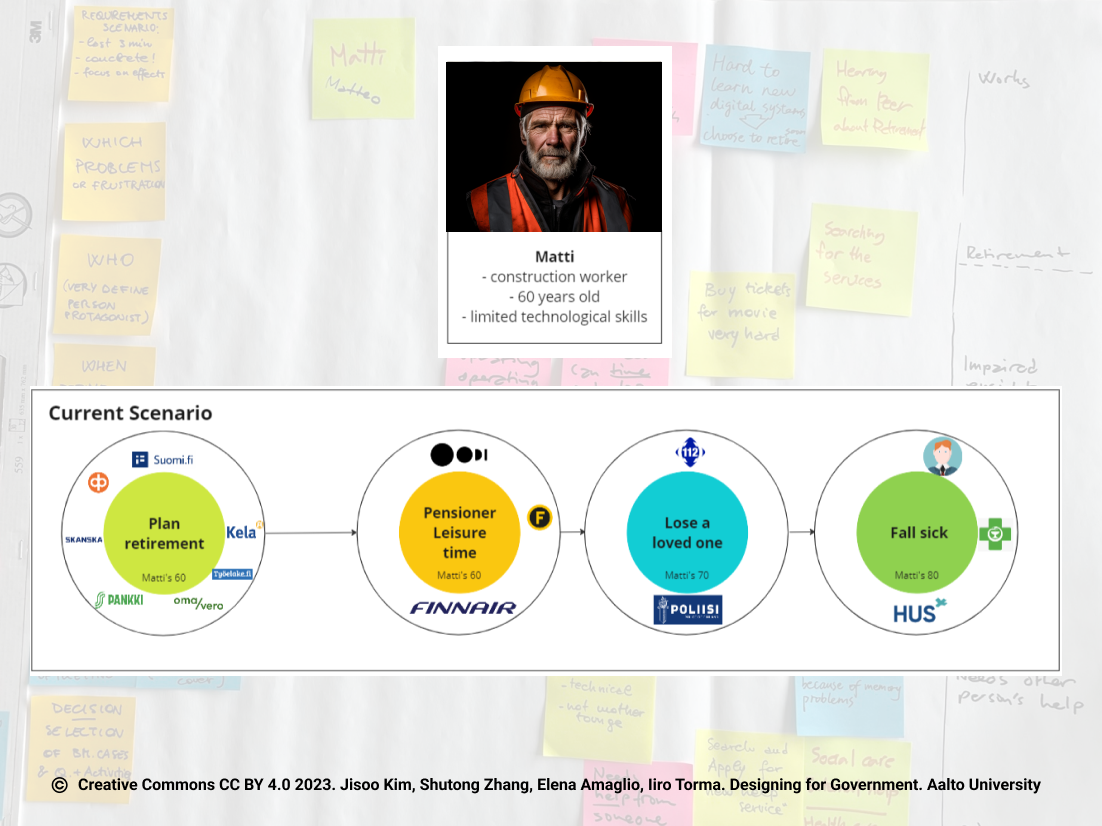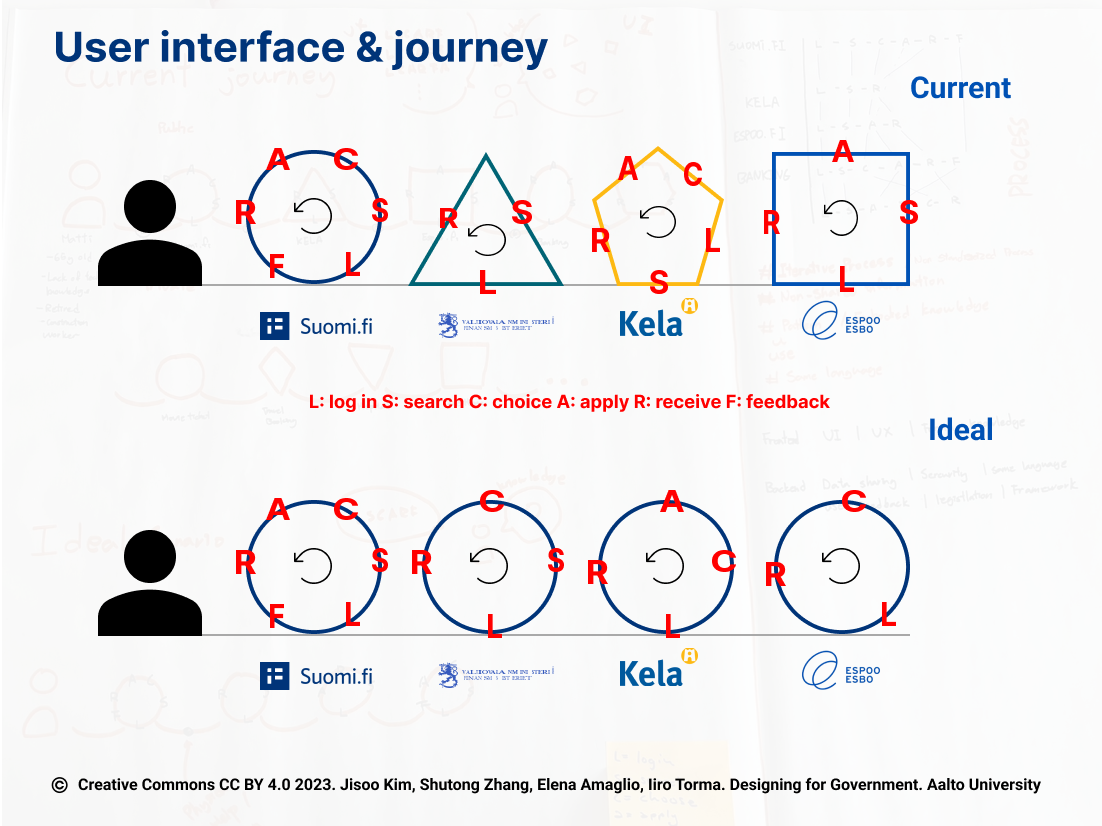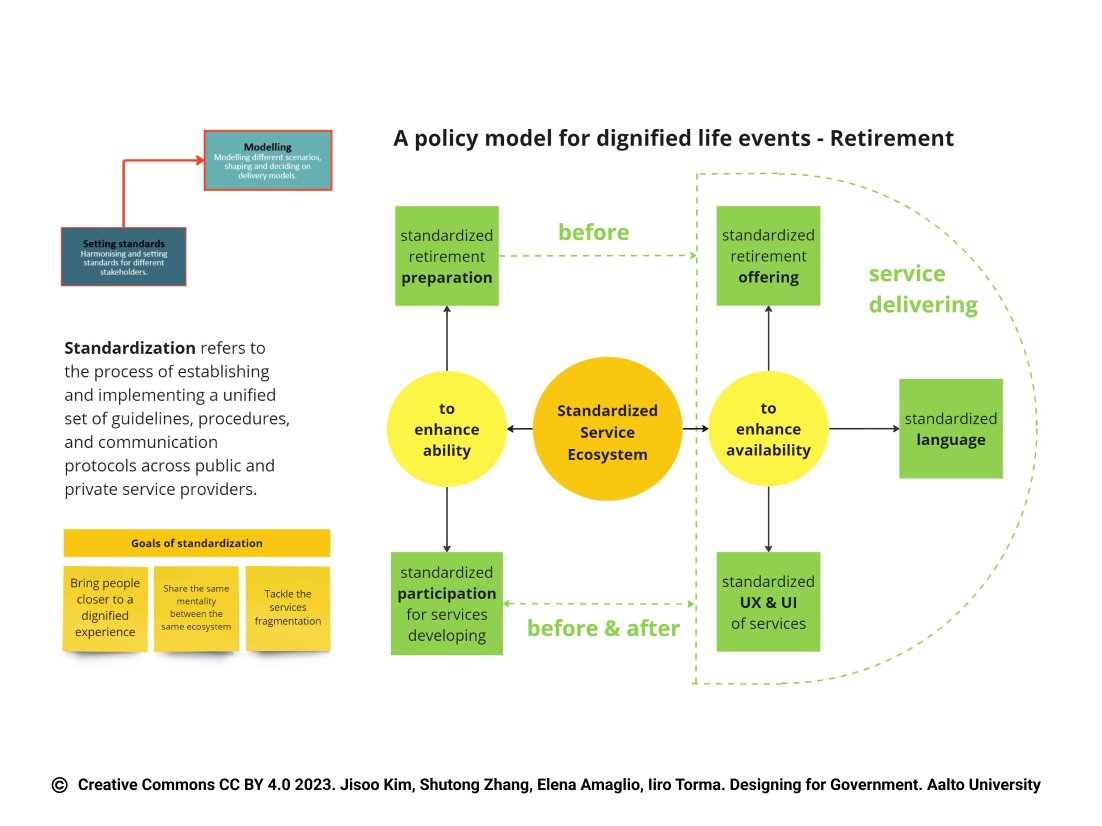This blog post reports on work-in-progress within the DfG course! The post is written by group 1A, working in collaboration with the Digital Population and Data Services (DVV) and the Ministry of Finance (VM) on the project ‘Life events for a dignified old age’. ‘Life events for a dignified old age’. The group includes Elena Amaglio, Jisoo Kim and Iiro Torma from the Collaborative & Industrial Design program and Shutong Zhang from the Creative sustainability program.
Written by: Jisoo Kim
Introduction: Reviewing the Ability-Availability System
Welcome back to our blog! We are Team 1A, focusing on citizens’ perspectives on retirement. We know it’s been some time since our last post, but we’re thrilled to be back and ready to dive into a crucial topic. With an ageing population in Finland and the increasing complexity of retirement services (Soucy & Sagar, 2022), addressing retirees’ dignity has become more important than ever.
To ensure a dignified life, it is crucial to guarantee both the availability of services and the individual’s ability to access and utilize them, meeting a certain threshold – the line of dignity. In this post, I will focus on standardization as the cornerstone for enhancing ability and availability. Through standardization, we aim to provide a more dignified experience for individuals by promoting uniformity across the service ecosystem.

Fig1. Ability-Availability graph and the line of dignity.
Introducing Matti and His Journey
Before we dive deeper into standardization, let me introduce Matti. He is a fictional character we’ve created to represent the retirement journey from the perspective of an individual in Finland. Through his experiences, it became much easier to see and pinpoint retirees’ challenges within digitalized services.
As Matti embarks on his retirement journey, he encounters various services catering to his life, such as healthcare, financial planning, and social engagement. However, operating within unique systems, each service requires Matti to adapt to new user interfaces and learn different processes, grappling with varying requirements.
Matti struggles to understand the nuances of each service, often spending considerable time and effort. This steep learning curve leaves Matti feeling overwhelmed and disengaged, hindering his ability to benefit from services. As he enters the stage of navigating complexity (Coughlin, 2021), his decline in physical, mental, social, and financial resources makes it even more challenging for him to navigate the already fragmented service landscape.

Fig2. Illustration representing Matti’s journey of services after retirement
In short, this scenario got us thinking. Even though Matti’s story is fictional, it does a great job of showing the challenges retirees go through. Our biggest takeaway was that telling a story makes it easier for people to step into someone else’s shoes and feel what they’re going through.
Fragmentation of Services and Data
Fragmentation is a significant challenge that retirees face as they navigate the diverse landscape of retirement services. Overall, it takes two primary forms: the fragmentation of services themselves and of the underlying data that drives these services.

Fig3. Illustration representing current and ideal user Interface and user journey.
What do we mean by this? Each public and private service provider typically operates within its unique system, with its processes, requirements, and user interfaces. While this may benefit individual organizations by allowing them to optimize their operations and cater to specific needs, it creates a disjointed and often confusing experience for retirees and seniors. They must continually adapt to different systems, learn new procedures, and navigate the intricacies of various interfaces to access the services they need.
Adding complexity to this issue is data fragmentation. Organizations often use varying data formats, vocabularies, and data models, which can hinder the efficient sharing and interpretation of information. This inconsistency in data can lead to misunderstandings, errors, and a less efficient system, as service providers find it challenging to work together seamlessly.
In short, this fragmentation can be frustrating and overwhelming for retirees who just want to access the services they need without any complications. We must address these issues to create a more cohesive and user-friendly experience for our retirees to enjoy their retirement without unnecessary stress.
“There’s a lot of data, basic data and different registers. But the data means different things, or they are named differently.”
– Jani Ruuskanen, DVV
Standardization: The Key to Enhance Ability and Availability
As we’ve seen through Matti’s experience, the fragmentation of services and data in the retirement ecosystem has become a significant challenge for retirees. As a team, we believe standardization could be the key solution to address these challenges, enhancing both the ability of individuals to access and utilize retirement services and the overall availability of these services.
What should we standardize, and how?

Fig 4. Mapping standardization for different sectors
We have developed a comprehensive model to pinpoint the areas where standardization is most crucial and the potential benefits it can offer. To enhance the availability of services, we’ve identified the need for standardized retirement offerings, language (data), user experience and user interface designs. To improve individual ability, we have also highlighted the importance of standardized retirement preparation and participation in service development.
In this context, “standardization” goes beyond merely adopting common visualizations or processes. It encompasses a broader goal of enhancing the overall system to create a more seamless and dignified retirement experience. By implementing standardization, we aim to bring people closer to a dignified retirement experience and foster a shared mindset within the service ecosystem.
In a sense, it’s like we’re building bridges between these organizations, ensuring everyone is on the same page and working towards the same goals.
Next Steps
Digitalization and automation continue to advance rapidly, leading to significant generational shifts in the experiences and challenges individuals face. As the OECD (2017) notes, each generation now lives in a considerably different world than their predecessors.
Imagine a digital world with a constantly shared understanding, where individuals do not need to continually adapt to new environments. Establishing this kind of stability could transform the way people navigate the ever – changing digital landscape.
Get ready for an exciting journey as we dive into the next phase of our vision! We’re about to explore the specific actions that DVV can revisit in the current system. As we thoroughly analyze existing offerings, organizational structures, and providers capabilities, we’ll uncover the critical leverage points that will pave the way for developing a critical design intervention. So, stay tuned as we work together towards creating a streamlined and efficient retirement service ecosystem that will transform the lives of retirees for the better!
References:
Soucy, L., & S, S. (2022, June 24). Challenges Faced by the Retirement Services Ecosystem. Congruentsolutions. https://www.congruentsolutions.com/blogposts/challenges-faced-by-the-retirement-services-ecosystem/
Coughlin, J. C. (2021, October 21). How to Plan for the “Navigating Complexity” Phase of Retirement. Hartfordfunds. https://www.congruentsolutions.com/blogposts/challenges-faced-by-the-retirement-services-ecosystem/
Unequally, O. P. A. (2017). OECD Publishing: Paris. https://doi.org/10.1787/9789264279087-en.
The DfG course runs for 14 weeks each spring – the 2023 course has now started and runs from 27 Feb to 31 May. It’s an advanced studio course in which students work in multidisciplinary teams to address project briefs commissioned by governmental ministries in Finland. The course proceeds through the spring as a series of teaching modules in which various research and design methods are applied to address the project briefs. Blog posts are written by student groups, in which they share news, experiences and insights from within the course activities and their project development. More information here about the DfG 2023 project briefs.
